David Lynch is a prolific filmmaker known for his striking visuals and unusual themes. In his MasterClass, he teaches creativity and filmmaking – something I was curious to see given his guarded approach to his art.
Whether you’re new to David Lynch’s work or are a die-hard fan, you’ve probably arrived at this David Lynch MasterClass wondering how good the David Lynch MasterClass is and whether it's right for you.
In this balanced David Lynch MasterClass review I'll be sharing my experience of completing the course and detailing the pros and cons to help you answer those questions, and more.
If you’re pressed for time or just want the main points this summary is for you:
.
Quick summary
Learn how to:
- Catch ideas and translate them into a script
- Cast characters
- Work with actors and crew
- Create a unique world on set
- Collaborate with musicians on sound design and scoring
- Use transcendental meditation to enhance creativity
Pros
- Learn from a critically-acclaimed filmmaker
- Get into the creative mindset and capture ideas
- Realise your vision and bring it to life
Cons
- Takes a while to get going
- Mostly abstract advice
- No 1-1 contact
Course length: 13 videos, 2hr 52m
Best for: Admirers of David Lynch or anyone hoping to get into the world of films, especially younger filmmakers.
Overall: If you’re a fan of David’s style of abstraction, tangential anecdotes, and transcendental meditation, this course can be really inspiring. He offers an interesting perspective on filmmaking that is a far cry from the commercial values we often hear about.
So now to the detail – here's what I'll be covering:
- An inside look at David’s Lynch MasterClass (course overview)
- What I liked and didn’t like
- Who this MasterClass is for
- What others have said
- Price, alternatives, and course uniqueness
- Is it worth it?
But first the basics:
About David Lynch
David Lynch is a renowned filmmaker, most widely known for his 1986 film Blue Velvet and the TV series Twin Peaks, which is regarded as a landmark watershed in television drama.
After the release of his first feature film, Eraserhead (1977), David went on to achieve the Honorary Academy Award, as well as numerous accolades at the Venice Film Festival and the Saturn Awards (to name a few).
He’s best recognised for his surrealist style and use of dreamlike imagery throughout his work.
Knowing there wouldn’t be another course quite like it, I was eager to see how David Lynch would teach Creativity and Filmmaking to everyday audiences.
If you haven't seen the trailer for this MasterClass, it's a must watch:
About MasterClass
“Our instructors are the best in the world.”
MasterClass was founded in 2015 as an online educational resource. Its unique selling point is that it has world-renowned celebrities as tutors.
With over 150 online video courses, MasterClass has surged in popularity in recent months, with many users inspired to learn from their trusted idols.
While MasterClass offers an unrivaled opportunity for many, their courses may not be for everyone. I’ll be drawing attention to both its pros and cons in this David Lynch MasterClass Review.
If you want more detail on MasterClass and some of its most popular classes check out our Masterclass review and best MasterClass article.
A look inside David Lynch’s MasterClass
David Lynch’s MasterClass contains 13 lessons, including an interesting bonus chapter. With most lessons roughly between 10-15 minutes long, it adds up to a viewing time just shy of 3 hours.
This course also has a downloadable Class Companion Piece, sharing some additional content from David himself.
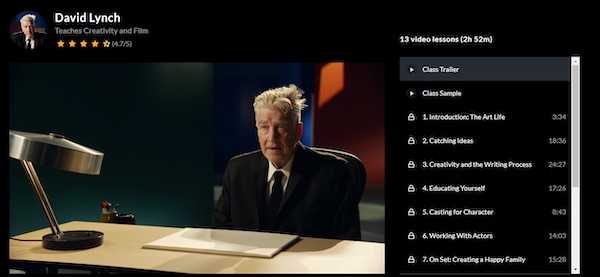
Lessons 1 & 2: The Art Life and Catching Ideas
“Every medium is infinitely deep, and when you get to know them, they’ll let you go deeper. This is the art life.”
David begins by introducing us to “the art life.” He uses this term to encompass not only film, but all creative mediums. This was a nice way of putting the course into perspective for those approaching it from varying backgrounds.
He shares his metaphor of idea-catching, citing it as the beginning of the entire art-making process. He also outlines the different steps that are key to creating something and uses Blue Velvet as an example of idea catching.
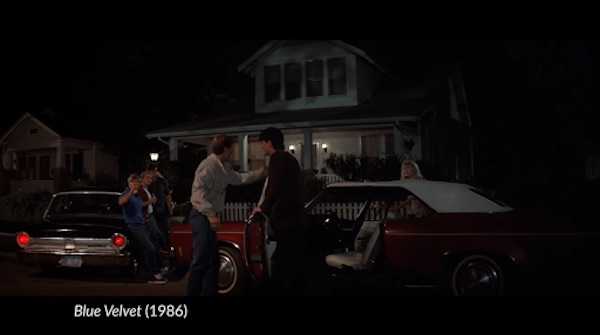
Lesson 3: Creativity and the Writing Process
“If you want to make a feature film, all you’ve got to do is come up with 70 ideas.”
Following on from his idea-catching lesson, David delves deeper into the writing process. Discarding the need for a strict formula, he teaches us how to:
- Use free-writing as a way to build ideas
- Revise your notes to develop your script
- Conjure up interesting characters
- Take ideas from the abstract to the material world
As the course gets rolling, David’s lessons seem a lot more tangible. He talks about daydreaming as a way to receive ideas and even details what makes an effective script.
David outlines our job as a filmmaker and teaches us how to establish a creative “set-up” regardless of what stage we’re at. I particularly liked his honest discussion of gathering time and materials for the art life, which he admits is a challenge to those with few resources.
Lesson 4: Educating Yourself
“What you just saw started everything for me in cinema.”
While David stresses the importance of technical knowledge, his key advice is to learn by doing. He emphasises the experiential over the theoretical and tells us how to benefit from creative relationships.
Drawing from his idea-catching lesson, he teaches us how to translate ideas into cinema. He backs this up with an example from his first ever film which he made with an old Kodak camera and no knowledge of filmmaking.
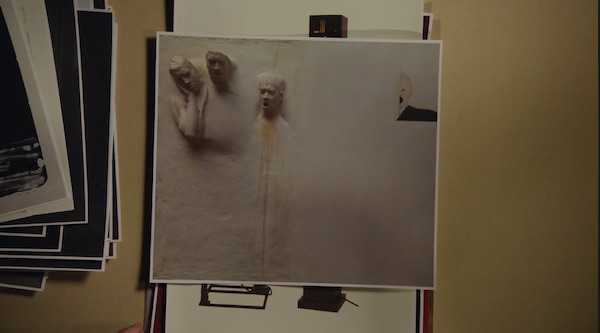
Along with his own case studies, David draws upon his favourite directors to show us how good filmmaking is done. He also recommends film analysis as a way to see what works well. He shows us several clips and tells us what techniques make the scenes succeed.
Lesson 5: Casting for Characters
“Can they be that character from a deep place within?”
Here, David focuses on how to get the right person for the part. He gives us insight into how he approaches the casting process.
He provides examples of actors from his filmography that have succeeded in fitting the part. One of these is Laura Dern, whom he shows as she appeared in Wild at Heart and Blue Velvet.
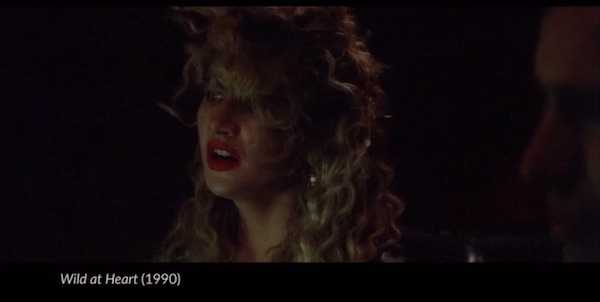
David discusses what makes Laura such a great actress, and why he looked beyond seeing her as fitting a single role.
This section was interesting for considering the relationship between director and actor, and highlighted the impact that a good creative relationship can have for our films.
Lesson 6: Working with Actors
“The actor has to understand enough to make it real from a deep place.”
Drawing from his discussion of idea-catching and intuition, David suggests how we can use our instincts to assess a scene, know when it’s right and how to make it so.
He provides useful advice about how to analyse rehearsals critically and some great tips on how best to impart our vision to actors.
For current film students, this section was particularly insightful as it discussed the 3 potential outcomes of a rehearsal and how to manage each one. We discover how to fine tune the rehearsal stage and direct and address our actors.
Lesson 7: On Set: Creating a Happy Family
“People that know me know that, wherever I’m sitting, that’s the main camera angle.”
From these two sections, I could feel the emphasis David puts on a good working relationship with his cast and crew. He highlights the importance of creating a comfortable environment for actors, and tells us how this translates into success.
David criticises businesses that run on fear, and tells us what inhibits actors on set. Framing the lesson as a day of filming, he explores how we can achieve the following:
- Establishing a rhythm during filming to ensure we get the shots we need
- Using rehearsals to their full potential
- Working through takes to get the best material
- Involving ourselves on set to better translate our ideas
- Coming up with new ideas while on set
I liked that he showed directing as a way of gaining inspiration rather than just working through steps. He even references one of his most notable characters, and how he was conjured on the set of Twin Peaks.
Lesson 8: Production Design: Building Unique Worlds
“When it’s not of this world, it can be anything, but it needs to be something.”
In this chapter, David discusses the 2 types of set design, and how they differ from one another. He shares an example of location-shooting for Eraserhead and how the physicalities of the set are important for manifesting our visions.
David even draws the set of Lost Highway for us, outlining what he shows to his design team and how they can ensure they’re on the same page.
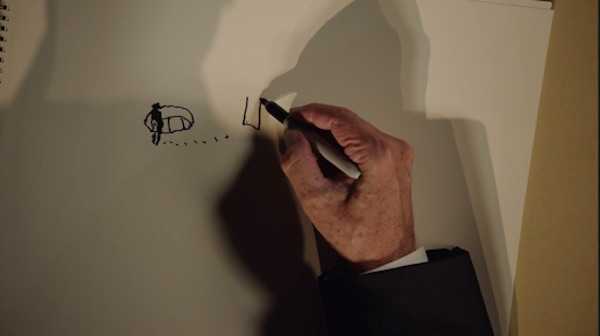
This was a useful lesson for anyone wondering how to communicate their angle to a designer. According to David, what’s most important is staying true to the ideas, and all location-scouting and set-designing should be done with this in mind.
He tells us his process for finding a location, and further discusses how to bring that location to life so it flows with the idea. As an example, he shows us the ending scene of Mulholland Drive, emphasising how he brought vision and scene together.
Lesson 9: Cinematography: Manifesting David’s Vision
David shows us how he worked with lighting in Eraserhead, the struggles he had with rim-lighting and how light and mood are vital for executing a story. He also shares with us his favourite recurring shots and how they are symbolic rather than stylistic.
In fact, a lot of David’s personal interest is in creating the “unknown.” And while it is one of many ways to approach the visual aspect of a film, it’s interesting to hear about the elements that bring a scene together. He advises us on the following:
- How to use lighting to create mood
- Building suspense through shadow
- Collaborating with cinematographers
- The benefit of storyboards and shot lists
David takes us through two scenes from Eraserhead and The Elephant Man, pointing out his use of “inkies” and layering to create the desired effect. It was exciting to see how David honed his techniques to create such distinct and compelling scenes before the use of digital technology.
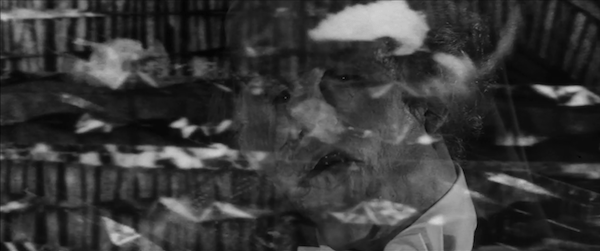
Lesson 10: Sound Design and Scoring
“Music, as everybody knows, is magical.”
In this lesson, David discusses examples of his musical collaborations. He specifically mentions working with Angelo Badalamenti on Blue Velvet and how he communicated with Angelo to show him his vision so Angelo could create the right music for the film.
While David mainly talks anecdotally of his experience working with musicians, he does offer some interesting takeaway points when it comes to visualising music, working with musicians to execute an idea, and using post-it notes to write down a song plan.
It was useful to hear about this, as it showed David navigating an area that wasn’t his forte, and it showed us how we can work with musicians to create the right piece.
Lesson 11: Breaking the Rules
“People should stop for red lights, but in cinema, I don’t like rules.”
For those familiar with David’s style, this is a great section for exploring rule-breaking in filmmaking. He discusses some sticky subjects like stealing shots and filming without permits.
While he concedes that we should abide by certain rules, he also tells us how we can take inspiration from veering away from the norm and even by having limited resources.
As he states:
“Restrictions, sometimes, can conjure really great ideas that provide solutions.”
I liked that this section gave some hope to those that were filming without studios, and it imparted some wisdom on how creativity can work equally well within bounds as outside of them.
Lesson 12: Make It True to the Ideas
“Every single moment we’re making decisions, and you just do the best you can.”
Similarly to the writing courses I’ve seen on MasterClass, David’s class has an interesting sub-section on failure and success. I’ve always enjoyed these as it covers the universal topic of rejection.
David poses a rethinking of failure as a positive outcome, and highlights the potential that failure can give. At the same time, he also discusses the risks involved in success and how both can be viewed positively and negatively.
While this chapter is mostly theoretical, David does talk about his failure of Dune and how he bounced back from it. It was a nice way to view the inevitabilities of rejection in the industry, and is also translatable across many forms.
Perhaps most usefully, David elaborates on the role of the audience and how it has changed in recent years. He compares cinema with television, listing the ways in which they differ and affect viewers.
As David suggests, grasping an audience’s attention for 2-3+ hours is the challenge directors face, and he outlines the ways in which TV shows and movies respectively succeed at this.
Bonus Chapter: Transcendental Meditation
At the end of the course, David delivers a bonus chapter on transcendental meditation. This seemed quite random, but did tie in well with the chapter on idea-catching and was useful for anyone interested in David’s way of thinking.
The chapter reads more like an advertisement or recommendation for further learning, and he gives us some groundwork on the following:
- What transcendental meditation is
- How meditation can be used in the idea-catching process
- The effects of transcendental meditation on consciousness
- How meditation can be conducive to creativity
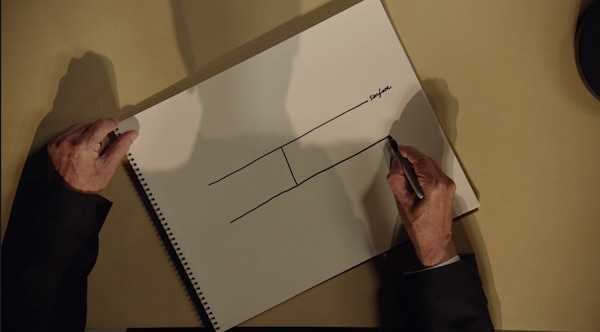
This is clearly a topic that interests David, having written a book on it himself. He views it as a way to “unfold your potential,” and I appreciated David’s willingness to share with us something he held dear.
My Experience of David Lynch’s MasterClass
Here I sum up my experience of this class – what I loved and how I think it could be improved – in order to help you decide whether it’s right for you.
What I liked
Learn from a Critically-Acclaimed Filmmaker
Winning the Golden Lion for Lifetime Achievement in 2006, David Lynch is a revered name in the film industry. With this in mind, he’s a valuable source to learn from.
MasterClass has high production values and delivers all videos to an astounding quality. For fans, David’s style of delivery is instantly recognisable and MasterClass did a great job of creating a Lynchian atmosphere throughout the course. David shares a lot of personal anecdotes about his films and his experiences breaking into the industry.
I liked that David was attentive to his audience, and realised that many wouldn’t have the resources to start with. He addressed his audience loyally, and gave a mixture of abstract and practical information to help them along their way.
What was most enjoyable was seeing some of his first film, which he used as the pivotal example of what gave him the “green light” into the industry. We see it in some detail, and discover how he achieved it with little technical equipment.
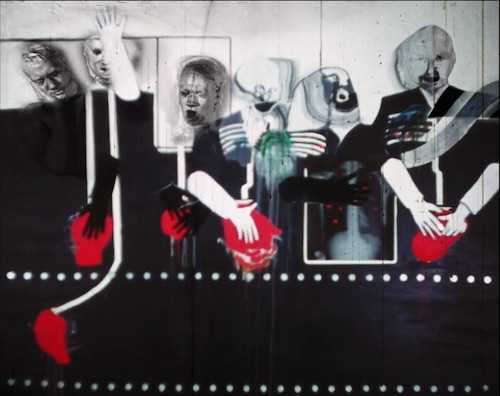
Catch and Develop Unique Ideas
This section was rather abstract but it is difficult for anyone to really teach the creative process. David does his best to portray idea-catching in visual terms. He uses the analogy of fishing and also of a hopper to help us get a feel for how ideas can form.
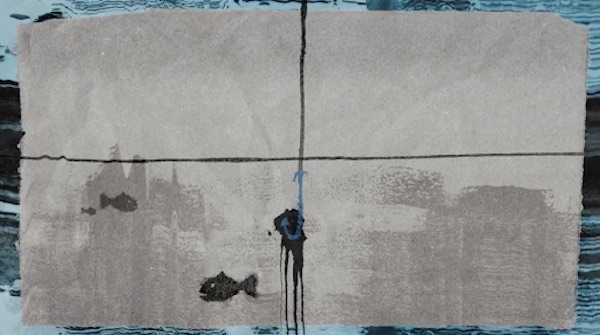
He provides some practical advice about how to note down and remember ideas, and views it as a fluid process from thinking to script-writing. Specifically, you’ll learn how to do the following:
- Pinpoint an idea from which others can emerge
- Translate ideas into a cinematic vision
- Use intuition to form your script
- Draw from your “hopper” to get ideas
For some, the chapter on transcendental meditation is a good companion to this. David ties it in with idea-catching and lists its benefits for filmmakers. It does point us in the right direction and leaves the practice open for consideration.
Plan a Feature Film
Around the middle of the course, the lessons flow more smoothly. Each follows on logically from the other and David takes us through the filmmaking process from forming ideas to executing them on set.
In fact, David tells us exactly how many ideas we need to have a feature film planned out and elaborates on what he calls the “4-hour rule.”
He also advises us on the writing process to help us to better formulate a story. I liked that David started to balance theory and practice more as the course went on, and this led to a lot of good takeaway points.
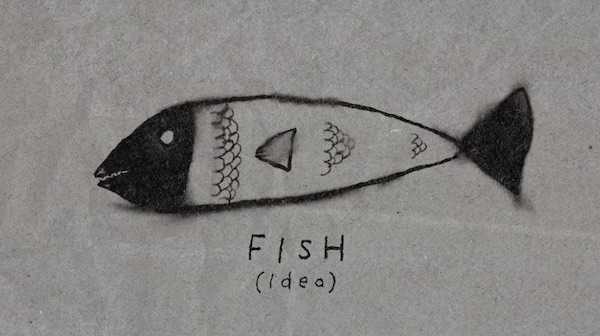
How to Find Resources for Filmmaking
For most learners on MasterClass, finding the right resources to make a good film is probably a common drawback.
What I liked was how quickly David addressed this issue and shared his own experience working to rent a studio and buying his first camera. Because of this, the filmmaking process seemed a lot more attainable and David seemed to relate to his audiences well.
He emphasises some practical points:
- Saving up money to buy materials
- Finding time to film
- Creating a setup
- Using other art forms as a gateway to filmmaking
He insists that we all have the ability to make things, and that we must honour our creative time and space to let ideas come into fruition.
Establish a Method for Casting Characters
As a filmmaker who uses several recurring cast members, it was interesting to gain insight into how David casts his roles. He elaborates on the idea of characters, of where they come from and how to know when they’re “right.”
Along with this intuitive process, he details how he takes his character idea and finds the perfect fit in the form of an actor. Along with the case studies of Laura Dern and Kyle MacLachlan, he also tells us how he casted Laura Palmer of Twin Peaks and how he realised her potential as a character.
While many budding filmmakers don’t have the same amount of resources, David provided a useful way of approaching casting and advised us on how to stick to our ideas when doing so.
Collaborate with Different Departments
I was impressed by the depth he went into when discussing working relationships. He teaches us how to communicate with actors and collaborate with creative teams so we can best capture our visions.
David insists that we do not compromise our ideas, and he pinpoints what elements we should keep in a film at all costs. This section posed an interesting way of viewing working relationships, and showed the creative potential it could unlock.
Materialise Your Vision
David’s chapter on cinematography was a turning point in the course. It brought together the vague notions of idea-catching with more concrete advice about how to bring ideas to life.
Using Dune as a case study, David tells us how he collaborated with his production designer to create his ideal set. He gives us several nuggets of wisdom when it comes to finding a location, and advises us about what to look out for when we’re scouting for areas.
I also enjoyed another tactile example of this, which was a scene from The Elephant Man. David tells us how he manifested the streets of London during the Industrial Revolution, and how his team used special effects to ensure an ongoing mood.
If you're curious to learn more about David Lynch's films, I'd highly recommend the video below, which provides excellent insight into David's work:
Access
Like most of the courses on MasterClass, David’s course includes video captions in English for those who are hard-of-hearing. These captions are not auto-generated and are carefully tailored to fit the video script.
Unfortunately, many students were not native English speakers, and at present, only English subtitles are available. On the plus side, MasterClass are hoping to add more languages soon.
What Could Be Improved
While I enjoyed this course, I felt that it wasn’t as strong as others I had taken. Here are some points for improvement, and I think it’s worth considering them before committing to the class.
Class Companion Piece
In place of the Workbooks that other courses contain, David’s course has a “class companion piece.” This contains anecdotes from David, and, while it covers a few topics mentioned in the course, it’s mainly a standalone piece.
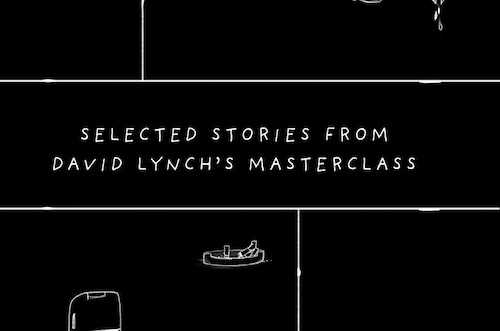
The class companion has “Selected Stories” that discuss some further analogies about idea-catching. But, it’s a lot more about David’s own philosophies and stories from sets.
While a lot of fans might enjoy this additional reading, I didn’t find it especially helpful, and it lacked the interactive exercises I so enjoyed in other courses.
Slow to Get Going
Personally, I found it difficult to get into David’s world in the first few lessons. They are very abstract and he often goes on tangents that overshadow his main points. There were mixed reviews regarding this style, with some fans captivated by it and others a little put off.
"Great intro. Once you hear his voice you are immediately in his world, and there's no other one quite like it." "I got his methodology but it's too broad with concerete details for execution" - Comments from the community
It’s a shame that this course takes a while to get moving, because when it does it’s really insightful. I browsed Reddit before taking this class and found that some users were put off by the philosophising in the trailer and introduction.
People’s views on the course seemed rather divisive, with some mentioning that the analogies aren’t unique to this MasterClass. I do think the course is more substantial than this, but I can understand people being deflected by the abstract content.
No 1-1 Contact
One perk of MasterClass is that some courses have a Q&A feature. Viewers can ask questions and receive personalised video answers from the instructor (most notably, Gordon Ramsay’s course has this feature).
Especially for the more abstract lessons, this feature would’ve been helpful so that David could clarify some key points. As a mostly subjective topic, this didn’t seem to be too big an issue. However, I still think it would be useful for the opening lessons (which users agreed were the weakest of the course).
"Easily the best Lynch video so far. I'll be honest, he sounds pretty 'wish-washy' to me in the first three. In this [lesson], he sounds like a man who has done some extraordinary work in his life, and has something to share about it" - Comment from the community
Despite lacking a Q&A section, David’s class does have its own community hub. Here, users can discuss lessons in a seminar-like context and share their thoughts on the course.
Vague Way of Speaking
I found that David’s speaking throughout the video was often vague and distracting. He doesn’t always cement his ideas, and uses the term “thing” to name an idea he has but can’t put into words.
Across the course, this didn’t seem too much of a problem for most, but it’s worth mentioning if it’s not your style. In fact, many die-hard Lynch fans loved his delivery, and found it motivational.
"David Lynch is a good communicator and he has a knack of storytelling." - Comment from the community
Not a Definitive Guide for Breaking Into the Film Industry
From the offset, David distinguishes his mode of filmmaking from the commercial industry he calls “entertainment.” With this in mind, a lot of his advice involves going against the grain and learning by doing.
On the one hand, this is inspiring for anyone on the fence about going out and getting started. At the same time, those expecting a step-by-step guide about how to break into commercial filmmaking will likely be disappointed.
"I like how David establishes the difference between art and entertainment up front. It let me know I was in the right place." - Comment from the community
David has a very different approach to filmmaking than other directors. His emphasis is always on the idea and being true to it throughout. His focus is definitely more on “the art life” as opposed to finding a big commercial break.
For some, this experimental approach to storytelling wasn’t engaging, and it’s definitely not a teaching style suited to everyone.
"It failed for me, as much as I like his work, I couldn't connect with his approach to develop a story." - Comment from the community
Who is this course for?
This course was clearly targeted towards young filmmakers hoping to get into film school. David takes the time to expand on how film school will benefit us, and what kind of creative relationships we should hope to form there.
David assumes that many of his viewers are complete beginners, and he introduces us to some essential films we should watch to get acquainted with successful film styles.
You can expect to learn how to:
- Find engaging ideas to convert into a script
- Draw on the human experience to inject realism into your work
- Break from the 3-act formula to create something new
- Create compelling and well-rounded characters
- Find the best actors suited to your idea
- Use sound and lighting to create mood
- Form strong working relationships with cast and crew
On a scale of 1-10 (1 being a beginner and 10 being a professional filmmaker), I’d say this course is ideal for anyone between 1 and 5.
How much does the David Lynch MasterClass cost?
At the time of writing MasterClass had three subscription offers. The cost of these (per month) is:
- Individual (1 user) $10
- Duo (2 users) $15
- Family (6 users) $20
All are billed annually, which at first glance may seem pricey.
However, you can considerably reduce your costs by joining with friends or family. And of course by taking as many courses as possible.
With nearly 200 courses on the platform you’re likely to find quite a few to interest you. Even if you buy an individual membership and find only 10% of the courses of interest this still works out to only $6 a course:
$120 (annual individual membership fee) / 20 courses = $6.
And if you join with friends or family then the cost of each course is drastically reduced. Check out our MasterClass review or MasterClass cost articles to see how.
Bearing in mind that these classes are taught by global leaders in their fields the value is unbeatable. You can pay over $100 for an online course taught by someone you’ve never even heard of, never mind a multi award winning filmmaker of Lynch's stature.
What’s more, MasterClass also offers a 30 day refund if you’re unhappy with your purchase.
You can also purchase MasterClass as a gift.
Alternatives to David Lynch’s MasterClass
MasterClass has several filmmaking courses. They are:
- James Cameron Teaches Filmmaking
- Jodie Foster Teaches Filmmaking
- Werner Herzog Teaches Filmmaking
- Spike Lee Teaches Independent Filmmaking
- Martin Scorsese Teaches Filmmaking
- Mira Nair Teaches Independent Filmmaking
- Ken Burns Teaches Documentary Filmmaking
A MasterClass subscription gives you access to them all and lets you take the best from each.
Outside of MasterClass, there are other options available. There a range of filmmaking classes on Linkedin Learning, Udemy and Skillshare. And if you are really committed to film making you could try a specialist filmmaking platform such as MZed which has great courses on, especially the one by Philip Bloom.
With the exception of MZed, most other courses do not offer the high level of teaching and production quality that comes with MasterClass. And of course, with an all access pass you can take any or all of the over 150 classes on the platform.
What Others Have Said
Some learners on MasterClass were already huge fans of David Lynch. Interestingly, though, there were others who weren’t familiar with his work. I found a 50/50 divide in the comments I saw online.
Many users on the MasterClass platform were impressed by the course and liked David’s teaching style.
"Amazing! ... to be able to hear Lynch talk about creativity is like watching real magic happen before your eyes" "David Lynch is a true genius who can communicate to any audience in an authentic way." - Comments from the community
On Reddit, one of the main criticisms was the principle of teaching creativity (and charging for it). For some, this seemed to be an oxymoron, and also didn’t seem like something David would naturally do.
"Basically, he's telling you to be individual and do what feels right. He can't teach you how, because you're not him and he's not you. I love his art, and he seems like a great guy, but he probably shouldn't charge money for his wisdom because his entire ethos means that he's only got one thing to say." Comment from Reddit
I agree that it is difficult (perhaps impossible) to teach creativity, but I also think David does his best to get viewers into a creative mindset. For others, this was also a perk and seemed to be an interesting way of sharing personal methodology without tarnishing individual thought.
"I actually found it really insightful as to why Lynch directs the things he does and his personal methods." - Comment from Reddit
All in all, this course was the most divisive one I’d seen so far. I think it boils down to viewers’ expectations and what they want to take from the course. For some, it just wasn’t technical enough. For others, entering David’s world was more than sufficient.
"The facts of filmmaking are not what I'm here for. I am here to enter Lynchworld and I am not disappointed in any way... He reals so much more than a bullet list." - Comment from the community
How long it took to complete the course
At just under 3 hours, this course wasn’t too long to complete at all. In fact, you could easily watch it in an afternoon and make an evening of reading the Course Companion Piece.
Because there are no additional exercises, you don’t need to invest much further time into the class. However, it’s probably helpful to watch some of David’s recommended films.
Most lessons are, on average, between 10 and 15 minutes long. This is quite manageable if you make time for the odd break in between.
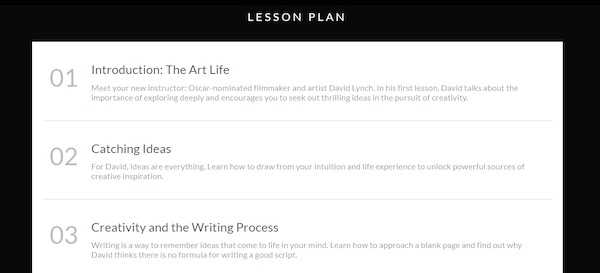
Is the course content unique?
One of the main criticisms of this course is that David doesn’t share anything new or insightful. In fact, there are plenty of videos online about David’s idea-catching process.
He even has his own book on transcendental meditation, which MasterClass includes as a bonus chapter.
All in all, I wouldn’t say this course is completely unique. In fact, some learners were already familiar with a lot of the terms used. However, as David’s first MasterClass, I still think this was an interesting watch. In particular, the course structure was useful for breaking down David’s process. Most users agreed he still had “a wealth of knowledge to share”.
"Really enjoying this course. You can see his creative wheels turning with every word selection. He has a wealth of knowledge to share." - Comment from the community
The benefit of MasterClass is that it condenses its instructors’ insights into one unit. The course presents David’s teachings in a clear and easy-to-follow structure, providing more depth and recent examples than we would otherwise get. Part of what you’re paying for is the convenience of having everything in one place.
What You Will Need
Because the course doesn’t have any set instructions or exercises to try, there’s technically no equipment needed. However, David does recommend getting a camera to go out and film. He also emphasises the importance of saving for resources.
David Lynch MasterClass: is it worth it?
It’s difficult to assess David’s class objectively. I think for die-hard fans, it might not offer a lot of new information. That being said, the MasterClass is a unique venture for a filmmaker who keeps his ideas quite guarded.
If you’re a fan of David’s style of abstraction, tangential anecdotes, and transcendental meditation, this course can be really inspiring. He offers an interesting perspective on filmmaking that is a far cry from the commercial values we often hear about.
With this in mind, I think it’s down to the individual to decide whether this is a worthwhile course. For those looking for something less theoretical, Werner Herzog’s MasterClass focuses on financing early films, cinematography, and editing.
You Will Learn How to:
- Catch ideas and translate them into a script
- Cast your characters
- Work with actors and crew members
- Create a unique world on set
- Collaborate with musicians on sound design and scoring
- Use transcendental meditation to help catch ideas
The all access subscription means you can take all the other filmmaking classes on the platform and glean the best from each. And if you’re a true David Lynch fan and are interested in seeing how he teaches a MasterClass, I’d say you will enjoy taking this one.
I found this class got progressively better as it went on. David does a good job of taking the abstract and bringing it to bear on the realities of filmmaking. While it’s worth noting that he doesn’t address the editing process, I think this is a useful course for anyone focused on telling a story on the big screen.
Since you can sample it for free and enjoy a 30 day money back guarantee, you have nothing to lose by checking out MasterClass.
Frequently Asked Questions:
13 lessons totalling just under 3 hours.
A MasterClass all-access-pass costs $120 a year ($10 a month). This gives you access to this MasterClass, alongside 190+ other courses.
Unfortunately you cannot get the course for free. But MasterClass has a range of purchasing options and offers refunds if you’re not happy.
MasterClass operate a 30 day refund policy. If you purchased a Class or Pass from another supplier, their own refund policy may apply.

Rebecca graduated from King's College university with a first class honours in English Language, followed by a Masters' Degree in Eighteenth Century Studies.

You have mentioned very interesting details! ps nice internet site. “To grow mature is to separate more distinctly, to connect more closely.” by Hugo Von Hofmannsthal.
Thank you so much! 😊 We’re glad you found the details interesting and appreciate your kind words about the site. That’s a fantastic quote—such a thoughtful perspective on growth and connection!